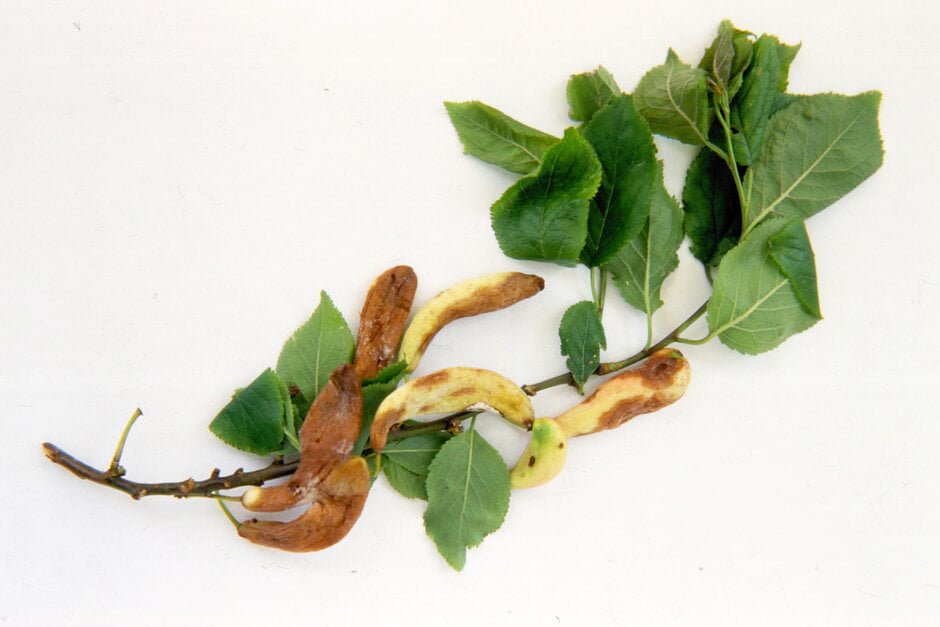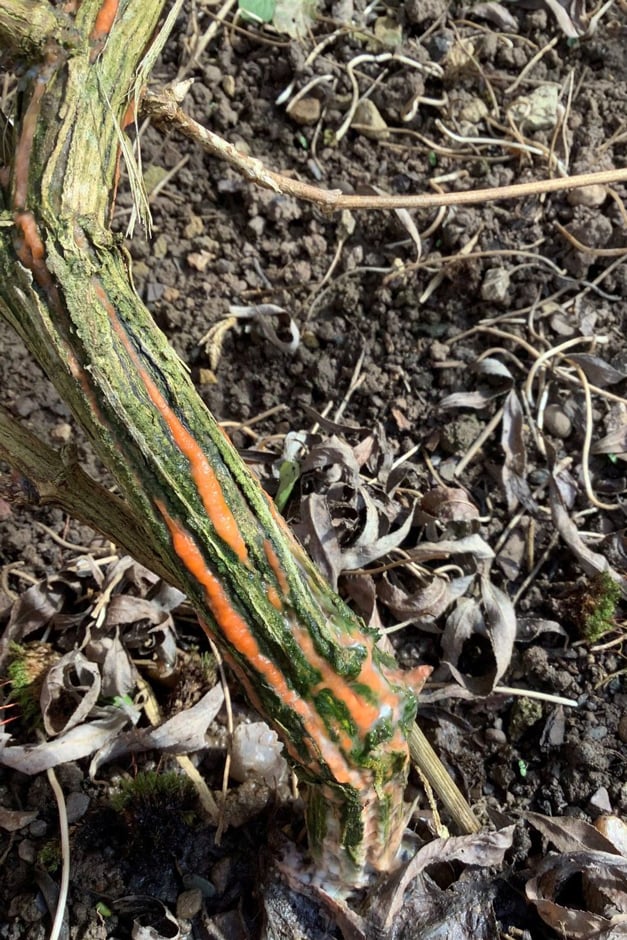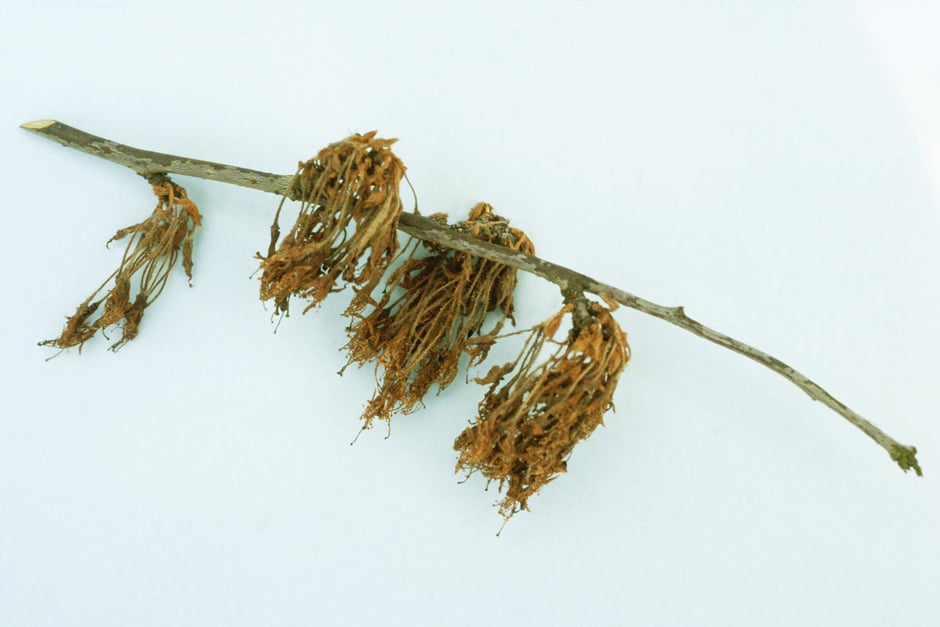RHS Science releases the top 10 most common diseases blighting UK gardens in 2023, with some intriguing new undesirables entering the field
 Pocket plum on Prunus domestica
Pocket plum on Prunus domestica
The Plant Health team at RHS Science has released its annual disease ranking, revealing the most prevalent problems for gardeners in 2023. Fruit trees continue to be under threat following the rise in fruit tree diseases seen in the 2022 list, but four diseases not seen in the rankings before have also entered the field.
 A damp spring and summer contributed to the prevalence of some diseases, with blossom wilt of fruit trees, pocket plum (seen above on Prunus domestica), tulip fire, and slime flux (seen here on clematis) all joining the top ten list for the first time.
A damp spring and summer contributed to the prevalence of some diseases, with blossom wilt of fruit trees, pocket plum (seen above on Prunus domestica), tulip fire, and slime flux (seen here on clematis) all joining the top ten list for the first time.
Increased planting of fruit trees in gardens in recent years, including heritage varieties that could be more prone to disease, is also thought to be a factor in the dominance of fruit tree diseases. Apples, pears, and Prunus are among the top five hosts, and were collectively the subject of over 1,000 enquiries to the RHS advisory service in 2023 – a 50% rise from 2022.
Hit parade of garden nasties
|
|
Top diseases 2023
|
Top diseases 2022
|
Top diseases 2021
|
|
1
|
Honey fungus
|
Honey fungus
|
Honey fungus
|
|
2
|
Apple and pear scab
|
Phytophthora root rots
|
Pear rust
|
|
3
|
Rose black spot
|
Powdery mildew of Prunus
|
Bacterial leaf spot and canker of Prunus
|
|
4
|
Pear rust
|
Rose black spot
|
Tomato/potato late blight
|
|
5=
|
Blossom wilt of fruit trees
|
Peach leaf curl
|
Rose black spot
|
|
5=
|
Bacterial leaf spot and canker of Prunus
|
Brown rot of fruit
|
Bracket fungi
|
|
7
|
Phytophthora root rots
|
Silver leaf
|
Powdery mildew of Prunus
|
|
8
|
Pocket plum
|
Apple and pear scab
|
Brown rot of fruit
|
|
9
|
Tulip fire
|
Pear rust
|
Phytophthora root rots
|
|
10
|
Slime flux
|
Apple and pear canker
|
Box blight
|
| |
|
|
|
Wet weather in the spring of 2023 provided the perfect conditions for
tulip fire, leading to a comeback into the top 10 for the first time in several years. This fungal disease causes brown spots and twisted, withered leaves.
The damp spring is also thought to be responsible for the prevalence of
pocket plum, which affects plums, damsons and some ornamental
Prunus, producing inedible, elongated, hollow fruits with no stone.

Another new chart topper was
slime flux, which troubles a wide variety of trees and shrubs (seen here on birch), as well as
clematis.
It is thought that the bacteria responsible for slime flux colonise trees via their roots, so the increase in prevalence may be a consequence of the wet winter in 2022-23 and resulting waterlogged soils.
There was also a rise in reported cases of rose black spot and pear rust, which can probably both be attributed to the warm and wet summer conditions.
Honey fungus remains at top spot for the 28
th year running, having hogged the limelight ever since the list was first published in 1995. Its ubiquity is partly due to the
Armillaria fungus having a large host range of more than 140 garden plants, particularly large woody ones. The most common victims in 2023 were privet, rose and viburnum.
Honey fungus causes dramatic symptoms, including cracked and bleeding bark, failure to flower and plant death. The most characteristic symptom of honey fungus is white fungal growth between the bark and wood, usually at ground level.
 Blossom wilt on cherry (Prunus)
Blossom wilt on cherry (Prunus)
How can I minimise plant disease in my garden?
Planting the right plant in the right place is a key factor in minimising disease, because stressed plants are more susceptible to disease. Other preventative measures include practising good plant care and hygiene, including mulching plants now with an organic mulch such as homemade compost or well-rotted manure while the soil is moist, ready to trap water in case of another dry summer.
It’s also important to prune to remove any dead or diseased material at the right time of year. For apple and pear trees this can be done in winter while they are still dormant, while Prunus should be pruned in summer when silver leaf is less prevalent.
 RHS Plant Pathologist Dr Liz Beal says: “Unusually wet weather in 2023 had a significant effect on plant health across the UK, with the prevalence of tulip fire and pocket plum demonstrating the impact of prolonged damp conditions.
RHS Plant Pathologist Dr Liz Beal says: “Unusually wet weather in 2023 had a significant effect on plant health across the UK, with the prevalence of tulip fire and pocket plum demonstrating the impact of prolonged damp conditions.
“Following the extreme drought of the previous year, many gardeners are left wondering how to prepare for unpredictable weather patterns. Understanding the conditions of your garden is key in deciding which plants will thrive where; the right plant in the right place will always have a better chance of fighting off infection.
Additionally, gardeners can help to combat many of the most common diseases in our ranking by practising good hygiene, keeping tools clean and removing – and safely disposing of – diseased plant material from their gardens.”
“The right plant in the right place will always have a better chance of fighting off infection”
Dr Liz Beal, RHS Plant Pathologist
The RHS Plant Health team uses the disease ranking to inform their research and advice. Ongoing research projects at RHS Hilltop – The Home of Gardening Science include characterising the dispersal mechanisms and variation of honey fungus populations, investigating the efficacy of silicon as a treatment for rose black spot, and investigating the effective management of Phytophthora in gardens, such as whether Phytophthora root rot remains present in previously cleared areas.

RHS members get free access to the charity’s one-to-one Gardening Advice Service, available by phone or email. Find out more about becoming a member here.
RHS advice pages are available for everyone for further information.

